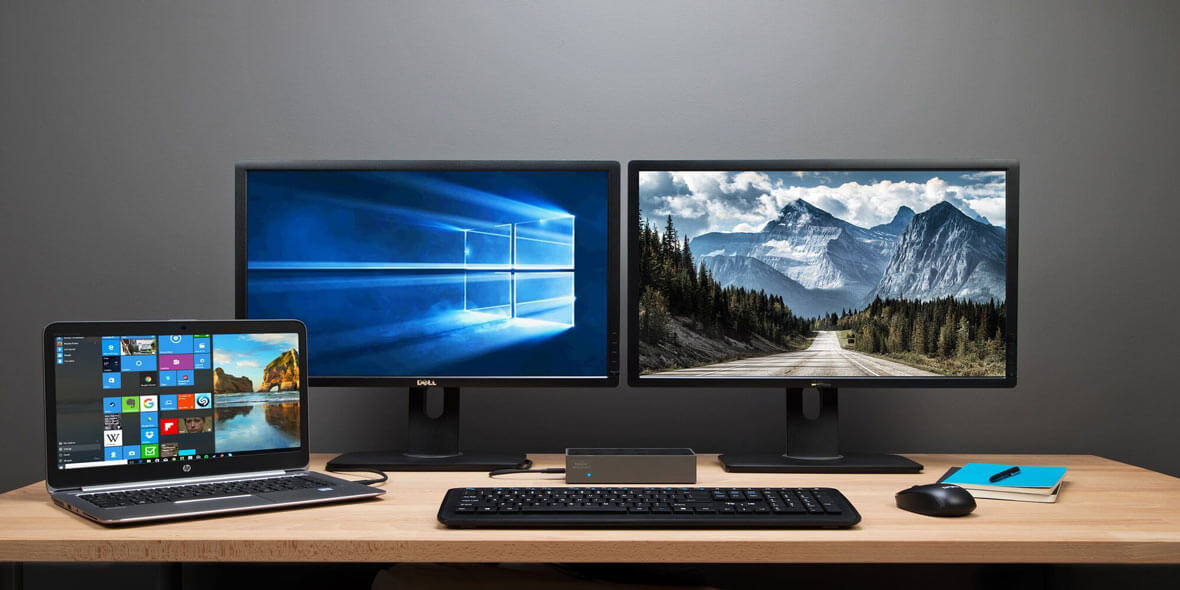White Paper: Universal docking stations support today’s alternative workspaces
December 19, 13
- Posted in: Tech Talk by Kevin Quinn, Thee DocKtor

For decades offices were predictably designed around a hierarchical system of cubicles and corner offices. Consistent, assigned seating was an employee's home away from home. These traditional workplace arrangements began to change in the 1990s with the advent of telecommuting. Advances in communications and computer technology have continued to fuel this trend away from the traditional office, giving rise to legions of home office workers and laptop-wielding road warriors. While increased employee mobility has delivered notable benefits for the enterprise and employee alike, organizations increasingly find themselves faced with unused workspace. A host of new practices have emerged to address these costly vacancies as organizations strive to make use of vacant space via workspace and technology sharing. New terms such as hoteling, moteling, and hot-desking have been coined to describe these new arrangements. While these terms represent often subtle differences in implementation (see Glossary at right), the essential concept is the same: Employees are no longer tied to a one-worker, one-desk arrangement. Universal USB hubs facilitate workspace sharing Realizing the benefits of these alternative workspace models requires development of an environment that takes advantage of worker mobility while remaining efficient and organized. Employees must have ready access to the resources they need, regardless of their location, and each workspace must be equipped and used as efficiently as possible. Universal USB docking stations offer a ready-made solution to the challenge of cost-effectively equipping shared workstations, delivering a fast, one-touch interface for creating a desktop environment. Shared spaces can be permanently equipped with display(s), keyboard, mice and other peripherals, all connected and ready-to-go via a dock that offers compatibility with any PC, MacBook, Ultrabook or Windows 8 tablet. Users quickly and easily connect their device to begin working in the shared space - now their own for the duration of their time there. Summary Shared workspace models address the changes and challenges of a mobile-minded workforce. Benefits to employees and organizations are numerous and include:
- Enhanced employee satisfaction Employee quality of life is enhanced by reduced commute time, added flexibility to attend to personal needs, greater control over workloads and an overall more balanced lifestyle.
- Improved employee retention Increased satisfaction improves retention, as does the ability to accommodate valuable employees unable to relocate to or remain at the company's physical location.
- Increased productivity Satisfied, empowered employees are more productive employees and many managers have found that employees are more productive at home or another off-site location, where they are free from impromptu interruptions and other office distractions.
- Significant cost savings Real estate is often the second largest expense for many organizations. Space sharing arrangements help organizations increase the return on their real estate investment and are often cited as reducing overhead costs up to 25-30%.


